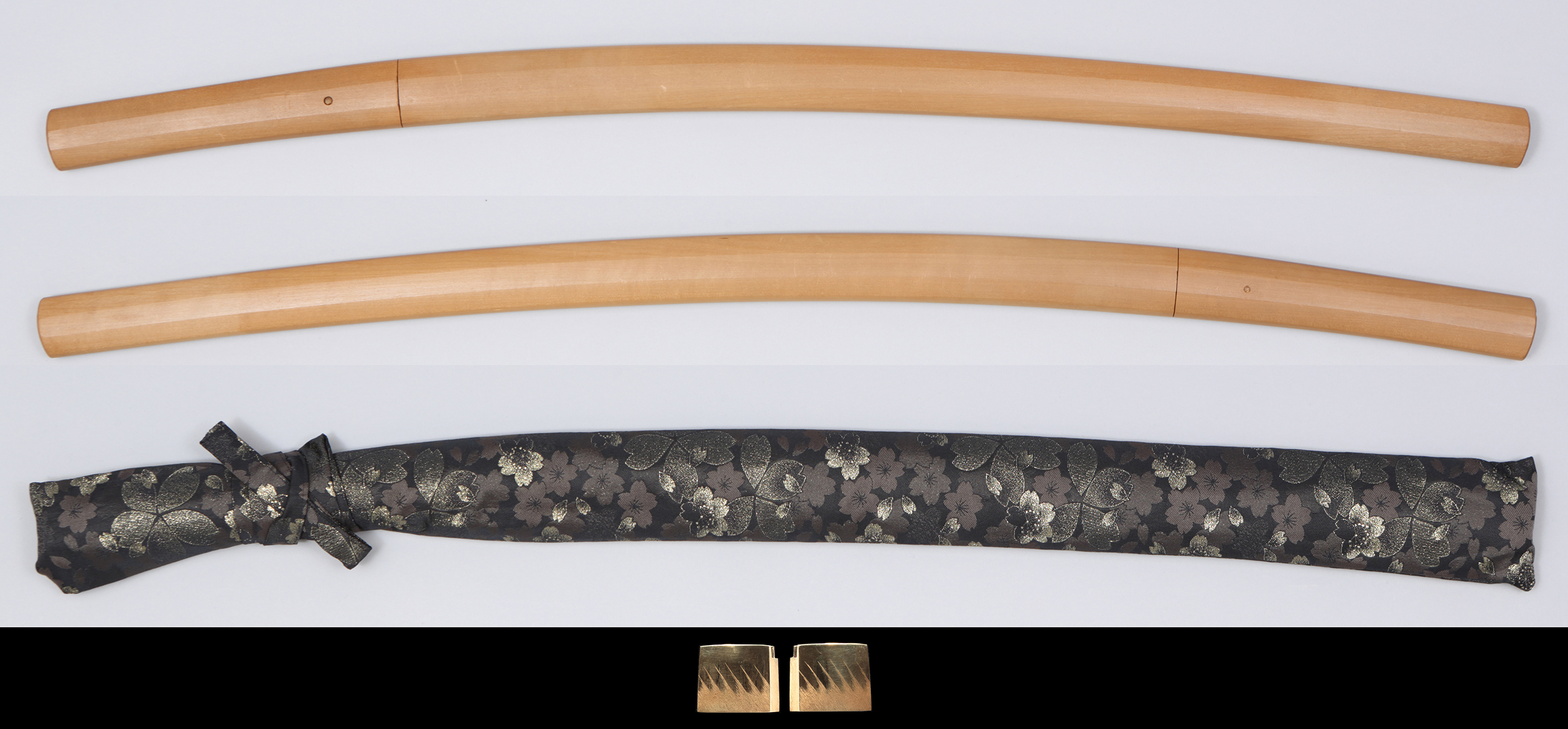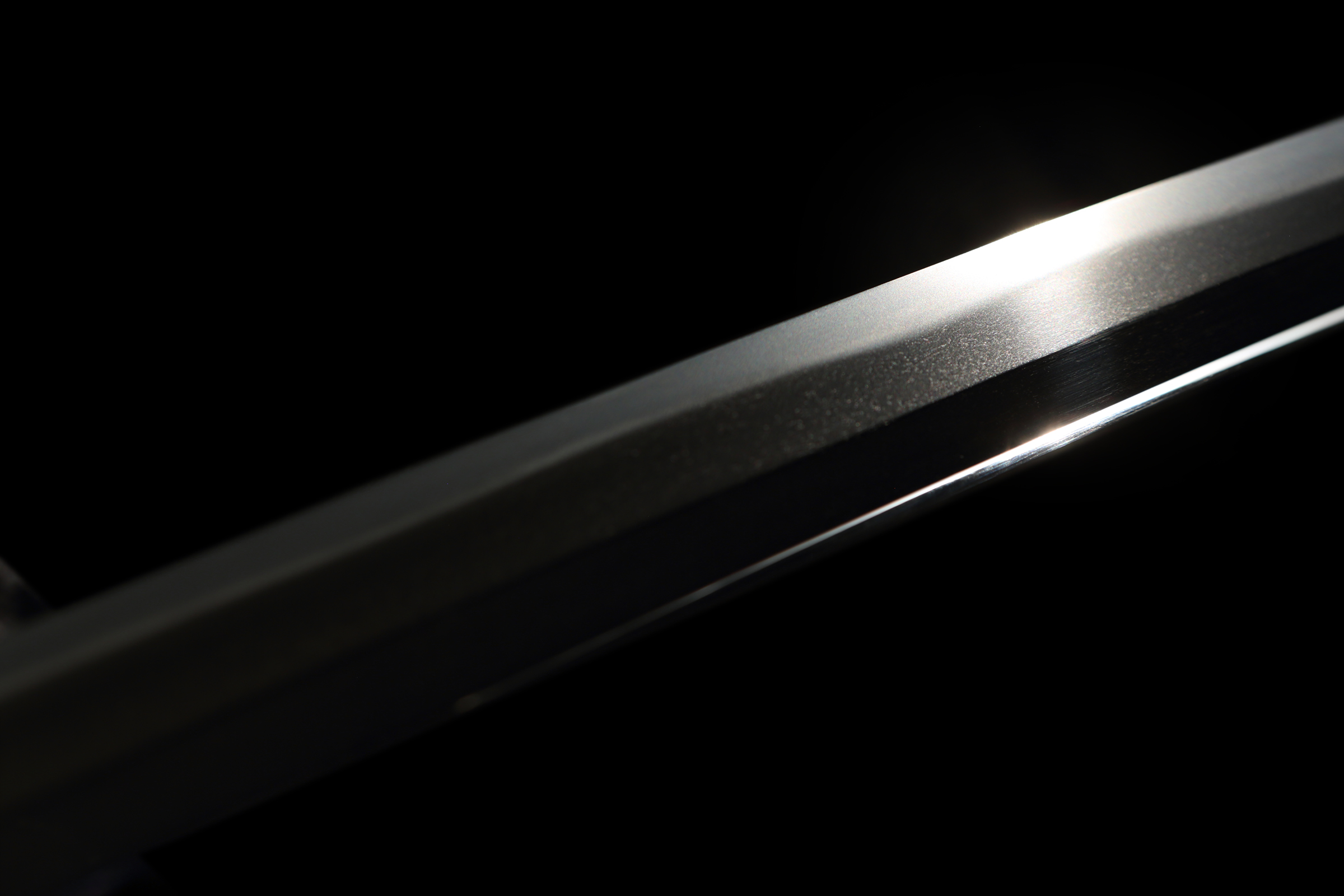[ Feature ]
Form : Shinogi-zukuri. Iori-mune. Mihaba is ordinal. Kasane is relatively thick. Slightly high shinogi-suji attached. There are some diffrences between moto-haba and saki-haba. High sori attached. Chu-kissaki extended form.
Nakago : Ubu. Yasurimes are kiri. Saki is kuri-jiri. One hole.
Jigane : Itame-hada well grained. Jinie attached. Chikei appeared.
Hamon : Sugu-ha tone. Gunomes and notare mixed. Nie attached well. Fine sunagashis appeared.
Boushi : It runs in shallow notare. Form is ko-maru. It turns somewhat deep.
[ Highlight ] Sukesada is known as one of the leading Sue Bizen swordsmiths, with dozens of names before and after him. Among them are dozens of swordsmiths known to have been involved in the koto old sword-making period, including Yosazaemon, Hikobei, Jiroshiro, Hikosaemon and Minamoto Hyoe around Eisho (1504-), Jirokuro, Jinzaburo, Nakagawa Shichiroemon, Jubei and Fukuoka Hachiro around Tenmon (1532-), Gengo-hyoe and Matabei around Eiroku (1558-), Shinjuro, Toshiro, Nakagawa Shichiroemon and Takagi Shichibei, etc. , and it is believed that there were several lines of swordsmiths, as they carefully inscribed their popular names on their signatures. In the shinto new sword period, Genzaemon, Sozaemon and Shichibei from around 1652 were followed by Ueno Daiju Sukesada and Yosanzaemon (known as Eisho 9th generation) from around 1661, both of whom are considered to be the twin peaks of the shinto new sword Sukesada lineage.
This sword has been identified as a Sukesada Osafune ju, Bizen Province, dated to the Temmei era (1781- ). The book of signatures states that the work is a rare example of "Bizen Province Nagafune Sumi Sukesada" with a date of 1782, which is believed to be the original Sukesada, and also makes signatures such as "Bizen Province Osahune ju Yokoyama Sukesada" and "Bizen Province Osafune ju Yokoyama Fujiwara Sukesada", indicating that it is the Yokoyama clan. The Tenmei period was a time of chaos and confusion, with a nationwide famine caused by cold weather, the eruption of Mount Asama, the discovery of gold seals, the destruction of rice granaries, great fires and floods.
Sukesada was followed by Yokoyama (Kakuji) Sukesada, who was apprenticed to Oku Motohira of Satsuma and changed his name to Sukehira, whose eldest son Sukesada's family adopted, and Sukesada's second son eventually developed into Kaga-no-suke Sukenaga, Tomonari's 56th grandchild.
This piece has a smooth, straight blade with a shallow curve and a ko-gunome pattern that widens and changes slowly from the centre of the blade to the mono-uchi. The forged surface is well grained, with no loose or rough edges, and the medium cutting edge is extended, giving the sword a sturdy and heavy feel in the hand.
[ Conditions ] Excellent.





